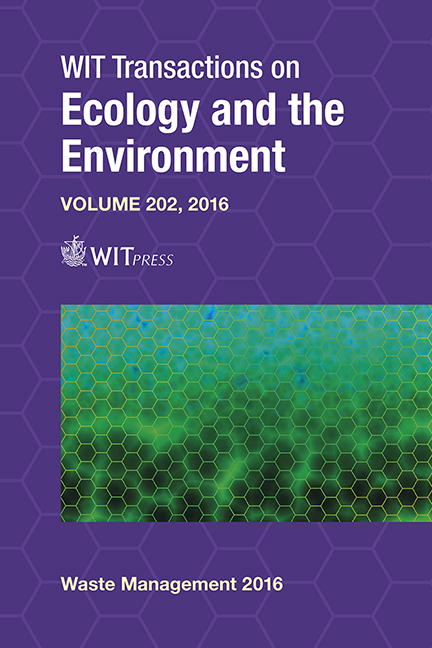Effects Of The Aeration On The Fluid Dynamic Behaviour Of A Multi-zone Activated Sludge System
Price
Free (open access)
Transaction
Volume
202
Pages
11
Page Range
311 - 321
Published
2016
Size
2,333 kb
Paper DOI
10.2495/WM160281
Copyright
WIT Press
Author(s)
F. Sánchez, A. S. Kaiser, A. Viedma, A. Gómez
Abstract
Conventional wastewater treatment plants (WWTP) are necessary to modify the wastewater properties in order to make it acceptable for a safe discharge into the environment or a certain reuse purpose. Biological oxidation is the most important of the processes involved in conventional WWTP. Organic substances dissolved in the water are removed by means of bacteria presented in the biological reactor. Air is necessary to enable the reduction of the organic content of the water by the bacteria. Bubbles of air are introduced into the reactor through air diffusers. Air diffusers can account up to 70% of WWTP total energy consumption.
So a deep understanding of the dynamic behaviour of the flow is necessary for optimizing the process and saving energy.
A numerical analysis of the effects of the aeration in the fluid dynamics behaviour of a real multi-zone activated sludge reactor is carried out. The purpose is to identify and analyse the changes originated in the velocity field by the aeration.
A numerical modelling of the activated sludge system located in San Pedro del Pinatar (Murcia, Spain) is developed throughout a general-purpose computational fluid dynamics (CFD) code. The multiphase flow is simulated with a Euler–Lagrange approach; modelling the bubbles as discrete phase. Two simulations, one with aeration and the other without it, are carried out. The numerical results show that the aeration has a notable effect in the performance of the reactor. Changes in velocity field, stagnant zones, residence time distribution or even free surface level originated by the aeration in the reactor are studied. In general, the aeration reduced the amount of stagnant volume in the reactor. However, when the aeration is activated, some re-circulating zones are formed, reducing the residence time in the reactor.
Keywords
air bubbles-water interaction, activated sludge system, wastewater treatment plant, numerical modelling





